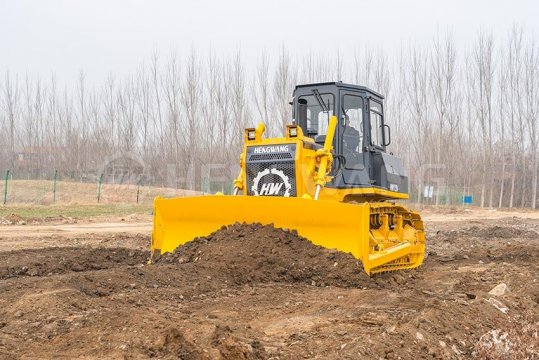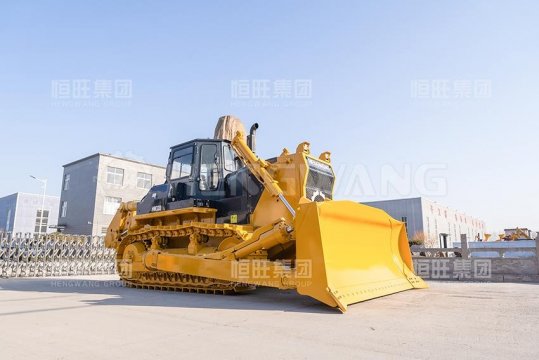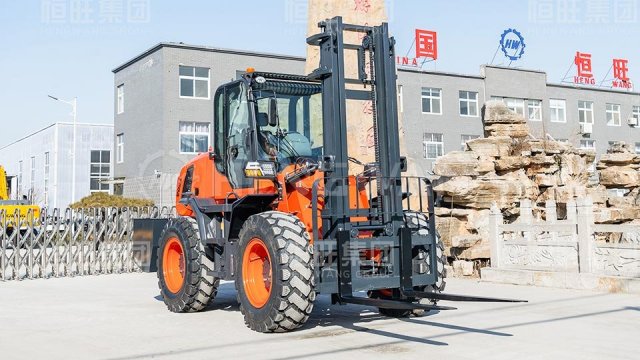In non-paved scenarios such as construction sites, mine camps, and agricultural estates, the rough terrain telescopic forklift, with its unique four-wheel drive design and retractable arm structure, has become a core equipment to break through terrain restrictions. Compared with traditional forklifts, the rough terrain telescopic forklift can not only move flexibly in complex environments such as mud and steep slopes but also realize high-lift and long-distance cargo handling through the extension of the boom, completely changing the operation mode of outdoor logistics. This article analyzes the core advantages, scenario adaptation, and selection points of the rough terrain telescopic forklift to help you match high-performance equipment.
1. Why is the Rough Terrain Telescopic Forklift an "All-Rounder" for Outdoor Operations?
The core competitiveness of the rough terrain telescopic forklift lies in its "trinity" performance combination: the four-wheel drive system ensures no slipping on 30° slopes or soft ground; the telescopic arm can achieve a lifting height of 6-12 meters and a forward extension distance of 5-8 meters, covering the operation range that traditional forklifts can hardly reach; the reinforced chassis with large-size off-road tires allows the rough terrain telescopic forklift to remain stable even on gravel and grass. In mine material transfer, one rough terrain telescopic forklift can replace the combination of traditional forklift and crane, improving work efficiency by more than 50%, which is the key reason why the rough terrain telescopic forklift is widely favored.
2. Key Performance Indicators of Rough Terrain Telescopic Forklift
(1) Terrain Adaptability: High-quality rough terrain telescopic forklifts need to have full-time four-wheel drive, with a minimum ground clearance of ≥300mm, and both approach and departure angles of ≥25°, easily coping with potholed roads.
(2) Load and Telescopic Capacity: Select the tonnage (3-10T) according to operational needs. The maximum lifting force of the telescopic arm must be ≥1.2 times the rated load to ensure that the boom does not settle under heavy loads, which is the safety bottom line of the rough terrain telescopic forklift.
(3) Operational Flexibility: Equipped with a 360° rotating console and multi-stage boom control system, a single handle can complete telescoping, lifting, and rotating actions, reducing the operational threshold of the rough terrain telescopic forklift.
(4) Power Configuration: Equipped with a turbocharged engine (power ≥75kw) matched with a low-speed and high-torque gearbox to ensure that the rough terrain telescopic forklift has sufficient power when climbing with heavy loads.
3. Selection Strategies for Rough Terrain Telescopic Forklifts in Different Scenarios
(1) Construction Sites: Choose 5-7T rough terrain telescopic forklifts with a maximum boom lifting height of ≥8 meters, suitable for container loading/unloading and high-altitude material transfer. Equipped with both fork and spreader attachments, it can realize "one machine with multiple uses".
(2) Mine Camps: Prioritize 10T heavy-duty models. The rough terrain telescopic forklift must be equipped with a roll-over protective cab (ROPS/FOPS certified), and tires should be puncture-resistant engineering tires to adapt to high-dust and gravel-rich environments.
(3) Agricultural Estates: 3-5T lightweight rough terrain telescopic forklifts are more suitable. With a boom forward extension distance of ≥6 meters, they can easily load and unload silage. The hydraulic system supports slow fine-tuning to avoid damage to crops.
4. Maintenance and Safety Specifications for Rough Terrain Telescopic Forklift
(1) Daily Inspection: Check tire pressure (off-road tires are recommended to be 0.8-1.0MPa) and the tightness of the four-wheel drive system before starting each day, which is the basis for ensuring the terrain adaptability of the rough terrain telescopic forklift.
(2) Boom Maintenance: Lubricate the hinge points of the telescopic boom every 200 hours of operation and check for leaks in hydraulic pipelines to prevent operation interruption of the rough terrain telescopic forklift due to boom jamming.
(3) Safe Operation: It is strictly prohibited to overload when the boom is fully extended. When climbing slopes, keep the goods in front of the cab, following the "heavy load and low center of gravity" principle of the rough terrain telescopic forklift.
Hengwang Group Rough Terrain Telescopic Forklift: A Reliable Partner in Complex Scenarios
Hengwang Group, targeting outdoor operation needs, has developed a series of rough terrain telescopic forklifts that perfectly adapt to multi-terrain logistics scenarios. The equipment adopts a full-time four-wheel drive system and a reinforced telescopic boom, with a lifting height covering 6-12 meters and a load capacity of 3-10T optional, meeting the operational needs of rough terrain telescopic forklifts in different scenarios. The cab is equipped with a suspended seat and panoramic glass, and the integrated design of the operating handle allows novices to quickly master the operation skills of the rough terrain telescopic forklift. Relying on the "four-dimensional integration" service system, Hengwang provides attachment customization, operation training, and 24-hour after-sales support for the rough terrain telescopic forklift to ensure efficient operation of the equipment.
Take Action Now: Leave your operation terrain and cargo weight to obtain an exclusive selection plan for the rough terrain telescopic forklift. The Hengwang technical team will respond within 24 hours! Choosing the right rough terrain telescopic forklift can turn logistics operations in complex terrains from "full of obstacles" to "efficient and smooth". Hengwang rough terrain telescopic forklift escorts every outdoor handling operation.

 Bulldozer Blade Types: Core Configuration for Adapting to Different Operating Scenarios
Bulldozer Blade Types: Core Configuration for Adapting to Different Operating Scenarios
 Swamp bulldozer: An Efficient Solution for Operations in Muddy Environments
Swamp bulldozer: An Efficient Solution for Operations in Muddy Environments
 Rough terrain forklift with highest load capacity: A High-performance Solution for Heavy-duty Outdoor Operations
Rough terrain forklift with highest load capacity: A High-performance Solution for Heavy-duty Outdoor Operations